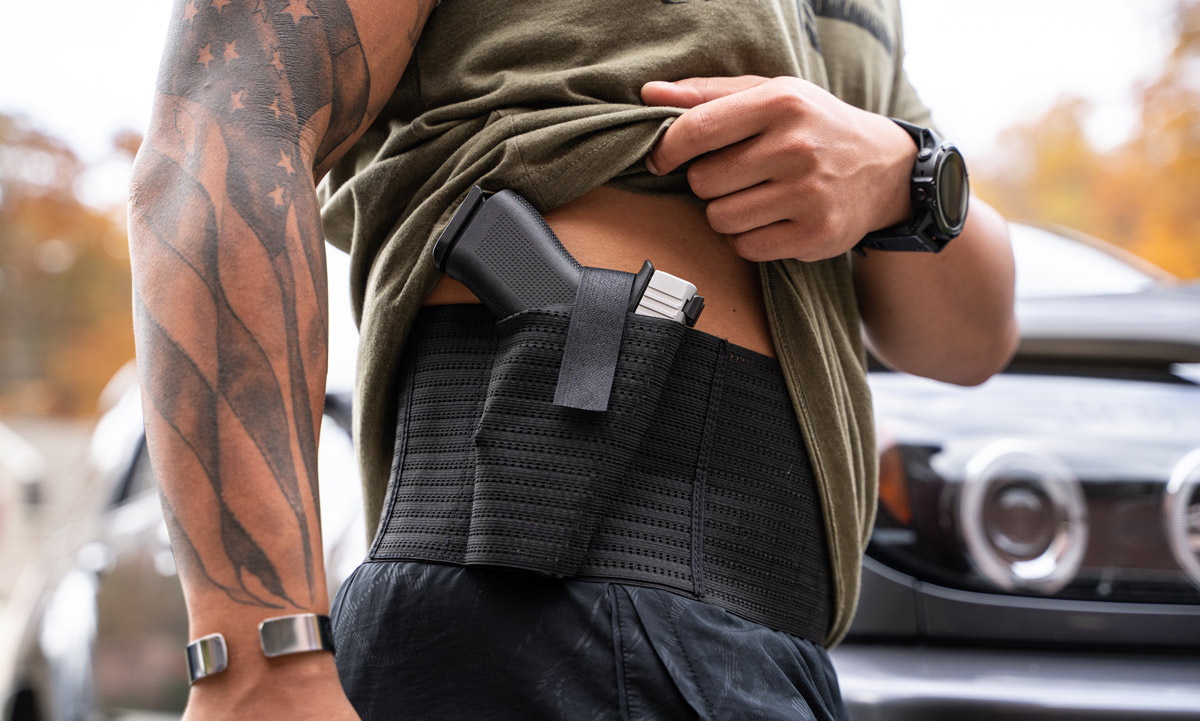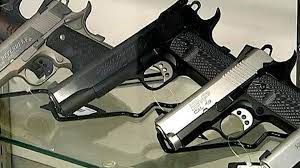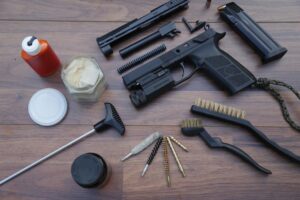How to concealed carry while running or being active
Carrying a concealed firearm while running, hiking, or engaging in other physical activities can be challenging, especially when traditional belt holsters are not an option. However, maintaining the ability to defend yourself is crucial, and finding suitable solutions is essential. In this article, we’ll explore various methods for concealed carry while being active, helping you make an informed decision based on your specific needs and preferences.
Belly Band Holsters
Benefits
Belly band holsters offer a versatile solution for concealed carry during physical activities. These holsters wrap around your midsection, allowing you to carry your firearm securely without the need for a belt. They provide excellent concealment, even when wearing lightweight or form-fitting clothing, such as gym shorts or running tights.
Considerations
When choosing a belly band holster, it’s essential to prioritize quality materials and construction. Avoid stretchy or elastic materials, as they may not provide the necessary support and retention. Instead, opt for belly bands that fasten securely, like a belt, and feature a hard shell to protect the trigger guard and keep the firearm secure.
Ankle Holsters
Pros
Ankle holsters can serve as a backup option for concealed carry when your primary method is not practical or accessible. They allow you to carry a smaller firearm on your ankle, providing a last-ditch solution in extreme situations.
Cons
However, ankle holsters have several drawbacks. Accessing the firearm is significantly slower and more conspicuous compared to other carry methods. Additionally, there are size limitations, as larger firearms may not fit comfortably or securely around the ankle. Long-term ankle carry can also put strain on your joints, potentially leading to knee or ankle issues over time.
Pocket Holsters and Pocket Carry
Advantages
Pocket carry, using a dedicated pocket holster, is a convenient and discreet option for concealed carry while being active. Pocket holsters can easily slip into gym shorts, track pants, or scrubs, allowing you to carry your firearm without the need for a belt or waistband.
Caveats
However, it’s crucial to select the right pocket pistol and always use a pocket holster. Never carry a firearm in a pocket without proper trigger guard protection, as this can compromise safety. Additionally, ensure that your clothing can adequately support the weight of the firearm without printing or sagging excessively.
Fanny Packs
Viability
Fanny packs, although often ridiculed for their fashion sense (or lack thereof), can be a viable option for concealed carry while being active. They allow you to carry a firearm securely attached to your body, ranging from micro or subcompact pistols to full-size service pistols, depending on the fanny pack’s design.
Considerations
When choosing a fanny pack for concealed carry, look for models with a dedicated compartment for the firearm. This compartment should provide quick access and secure retention. Some concealed carry-specific fanny packs are available, but you can also find more discreet options that allow for efficient firearm retrieval.
Interior Belts
Benefits
Interior or “hidden belt” systems offer another solution for concealed carry without a traditional belt. These systems consist of a band or belt worn under your clothing, allowing you to attach your regular inside-the-waistband (IWB) holster and carry your preferred firearm, regardless of your outer attire.
Drawbacks
While interior belts can be convenient, they may present concealment challenges similar to carrying with a standard belt. Certain movements, such as lifting your arms or bending over, can cause your shirt to rise, potentially revealing the firearm and holster. If deep concealment is a priority, you’ll need to ensure that your clothing and carry position provide adequate coverage.
Conclusion
Concealed carry while running, hiking, or engaging in other physical activities requires careful consideration and the selection of appropriate carry methods. Each option presented in this article offers its own set of benefits and drawbacks. It’s essential to evaluate your specific needs, preferences, and the level of concealment required before choosing a carry method. Regardless of your choice, practice and familiarize yourself with the chosen method to ensure safe and efficient firearm handling.
FAQs
Is it legal to carry a concealed firearm while running or engaging in physical activities?
The legality of concealed carry while being active varies by state and local laws. It’s crucial to research and comply with the relevant regulations in your area.
Can I use a regular belt holster with workout clothes or athletic attire?
While it’s possible to use a regular belt holster with some athletic attire, it may not be practical or comfortable for activities that involve a lot of movement or don’t accommodate a belt.
Are belly band holsters comfortable for extended periods of wear?
The comfort of belly band holsters can vary depending on the quality of the materials and the fit. It’s advisable to try different options and adjust the tightness to find the most comfortable setup for your body type.
How do I prevent printing or revealing the firearm when using an interior belt or fanny pack?
Careful selection of clothing, proper positioning of the firearm, and practice are essential to minimize printing or accidental exposure when using interior belts or fanny packs.
Can I use a pocket holster with any type of pocket?
Pocket holsters are designed for specific pocket types and firearm sizes. It’s important to match the pocket holster to the appropriate pocket depth and dimensions to ensure proper retention and accessibility.






